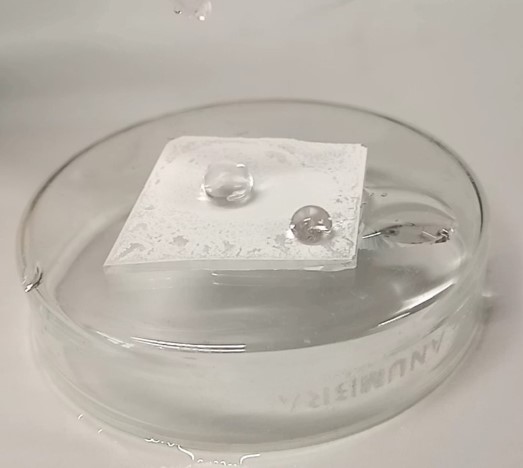
Research updates:
October, 2022: Catalina participated in Geo-Science communication school with the previous poster, in order to improve the communication skills.
June, 2022: Catalina participated in the International Symposium on Polymer Analysis and Characterization -ISPAC-. Check her poster here
May, 2022: Catalina participated in May/2022 of Bicocca Research Magazine‘ s edition of University of Milano Bicocca-Check out page N°32
Feb, 2022: Superhydrophobic surfaces are useful to understand the relation between wettability and icephobicity. Here is one of the superhydrophobic hard references Catalina is using to understand icing events:
About her:
| “I studied Chemistry and MSc. in Chemical Science in the Universidad de Antioquia in Colombia. During my studies I have been attracted to the design and synthesis of materials, because of its wide range of properties that allow imagining the most unexpected behavior with many possibilities for further application. Furthermore, very specific properties could be achieved using the high versatility of organic polymers. That is why my main interest in the polymeric field is related to designing stimuli-responsive, hopefully, sustainable materials (degradable, recycled, or bio-based) for high-impact applications. In the previous years, I developed waterborne polyurethane (PU) and acrylic/PU coatings with enhanced hydrophobic behavior at temperatures around boiling water. In that period, I studied the basis for dispersible materials through different polymeric processes like step and radical polymerization, additionally, I gained experience in the mechanical, thermal, and surface characterization of dispersions and films. My experience in polymer synthesis will be useful to obtain materials with discontinued wettability and stiffness properties that could be localized, to research their ability to decrease the ice accretion and adhesion” |
Project goals
The concept of Discontinuity-enhanced icephobicity states that it is possible to improve the icephobic behavior when there are discontinuous properties in the surface. The lack of homogeneity of water layer in the surface would delay ice formation and facilitate the ice removal once solidification occurs. Some of the ESR will explore the effect of wettability, morphology, chemical functionalization and, out goal is to investigate the role of hardness (stiffness) in the ice accretion and adhesion properties. Some strategies can be used to obtain materials with different stiffness, but there is a challenge about have such materials in a patterned array. Patterned soft and hard domains (different young modulus) will be useful to measure their hydrophilic and icephobic behavior in the boundaries and evaluate the effect of elasticity on ice adhesion. After have this kind of surfaces, chemical functionalization by vapor deposition will be evaluated in order to develop a scalable coating process in collaboration with an industrial partner.
Combining the understanding earned in every stage of the process, I will be able to propose a formulation of a coating with good icephobic properties.


